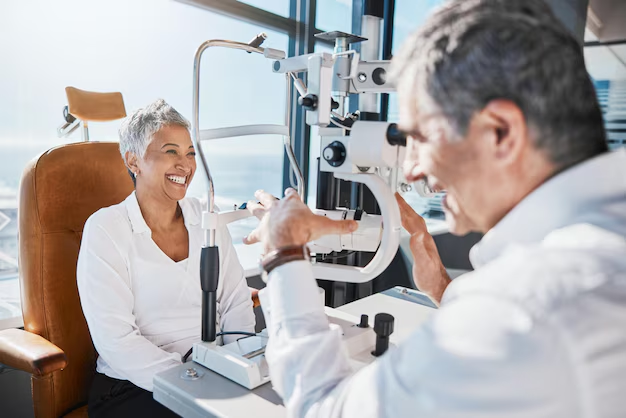Can You Undergo Cataract Surgery More Than Once? Navigating the Possibilities
Cataract surgery is a common procedure aimed at restoring clear vision by replacing the eye's cloudy lens with an artificial implant. For many, this surgery is a life-changing event that enhances their quality of life. But a question that often arises among those who have undergone the procedure is: Can cataract surgery be performed more than once? This article delves into this question, exploring the scenarios where a secondary intervention might be necessary and what options exist for patients seeking further clarity in their vision.
Understanding Cataracts and Cataract Surgery
What Are Cataracts?
Cataracts develop when the lens of your eye becomes clouded, affecting vision quality. They are most commonly associated with aging but can occur due to other factors such as genetics, diabetes, or prolonged exposure to ultraviolet light. Symptoms typically include blurred vision, difficulty with night vision, and faded colors.
How Does Cataract Surgery Work?
Cataract surgery involves removing the cloudy lens from the eye and replacing it with a clear artificial lens known as an intraocular lens (IOL). This outpatient procedure is generally safe and effective, providing a significant improvement in vision for most patients.
When Might You Need Cataract Surgery Again?
Secondary Cataract: Posterior Capsule Opacification
One common reason a patient might believe they need a second cataract surgery is a condition called Posterior Capsule Opacification (PCO), often referred to as a secondary cataract. It's important to note that this isn't a cataract reoccurrence but rather a result of cell growth on the lens capsule, causing it to become cloudy and impair vision.
- Treatment for PCO: The standard solution for PCO is a procedure called YAG laser capsulotomy. This non-invasive laser treatment clears the cloudiness by creating an opening in the lens capsule, restoring clear vision quickly and effectively.
Repositioning or Replacing the IOL
In rare cases, the initial IOL might require repositioning due to its dislocation or suboptimal placement. Such incidents can cause visual distortions or imbalances in vision.
- Corrective Procedure: Surgical intervention can reposition or replace the IOL, correcting vision problems resulting from incorrect initial placement or dislocation.
Enhancing Vision After Initial Surgery
Sometimes, patients might seek a secondary procedure to enhance their vision further, especially if they are dissatisfied with the level of visual improvement following their initial cataract surgery.
- Enhancement Options: Options such as LASIK or lens exchange might be explored to fine-tune vision. These procedures aim to correct residual refractive errors that were not fully addressed during the cataract surgery.
Exploring Related Vision Concerns
Multifocal and Toric IOLs
Patients choosing cataract surgery often select from various IOL types, each with unique benefits:
- Multifocal IOLs offer simultaneous correction for distance and near vision but may involve longer adaptation times.
- Toric IOLs are tailored for patients with astigmatism, providing sharper vision than standard lenses.
Understanding the type of IOL placed during initial surgery is crucial, as it affects decisions regarding further vision enhancement procedures.
Managing Complications
Although cataract surgery has a high success rate, complications, albeit rare, can occur. Potential issues include infection, retinal detachment, or inflammation, which might necessitate further medical intervention.
- Monitoring and Follow-ups: Regular follow-up appointments ensure any emerging complications are swiftly addressed. Follow your surgeon's recommendations for monitoring and contact them promptly if you notice changes in your vision post-surgery.
Practical Tips for Navigating Cataract Surgery Follow-ups
Here's a concise summary of steps and considerations if you're contemplating or need further intervention after cataract surgery:
📝 Key Takeaways:
- Understand PCO: 🌫️ Be aware that a secondary cataract isn't a return of the original cataract but a common post-surgery outcome.
- Laser Capsulotomy: 🚀 Recognized as a swift and safe solution for clearing PCO-related vision issues.
- Discuss IOL Options: 🏥 Engage in detailed discussions with your ophthalmologist about IOL types suitable to your lifestyle and expectations.
- Follow-Up Importance: 👁️ Attend all scheduled follow-ups to ensure timely identification and management of any complications.
- Enhancement Procedures: 🔍 Investigate additional corrective procedures only when necessary and consult thoroughly regarding their benefits and risks.
By using these practical guidelines, patients can better navigate their experiences with cataract surgery and subsequent vision care.
Empowering Your Vision Health
Understanding the possibilities of needing further eye care after cataract surgery is crucial. It empowers patients to make informed decisions about their vision needs. While most individuals experience satisfactory outcomes following a single procedure, it's vital to acknowledge scenarios where further action might be necessary.
By maintaining regular follow-ups, communicating openly with your ophthalmologist, and exploring your options if post-surgery vision isn’t what you anticipated, you’ll be well-prepared to pursue the best course of action on your journey to clear and healthful vision.
Remember, clarity in vision often leads to clarity in life. Whether it’s addressing PCO, refining your refractive accuracy, or simply ensuring that any potential complications are monitored and managed, getting the right information and guidance can profoundly affect your quality of life post-cataract surgery.
